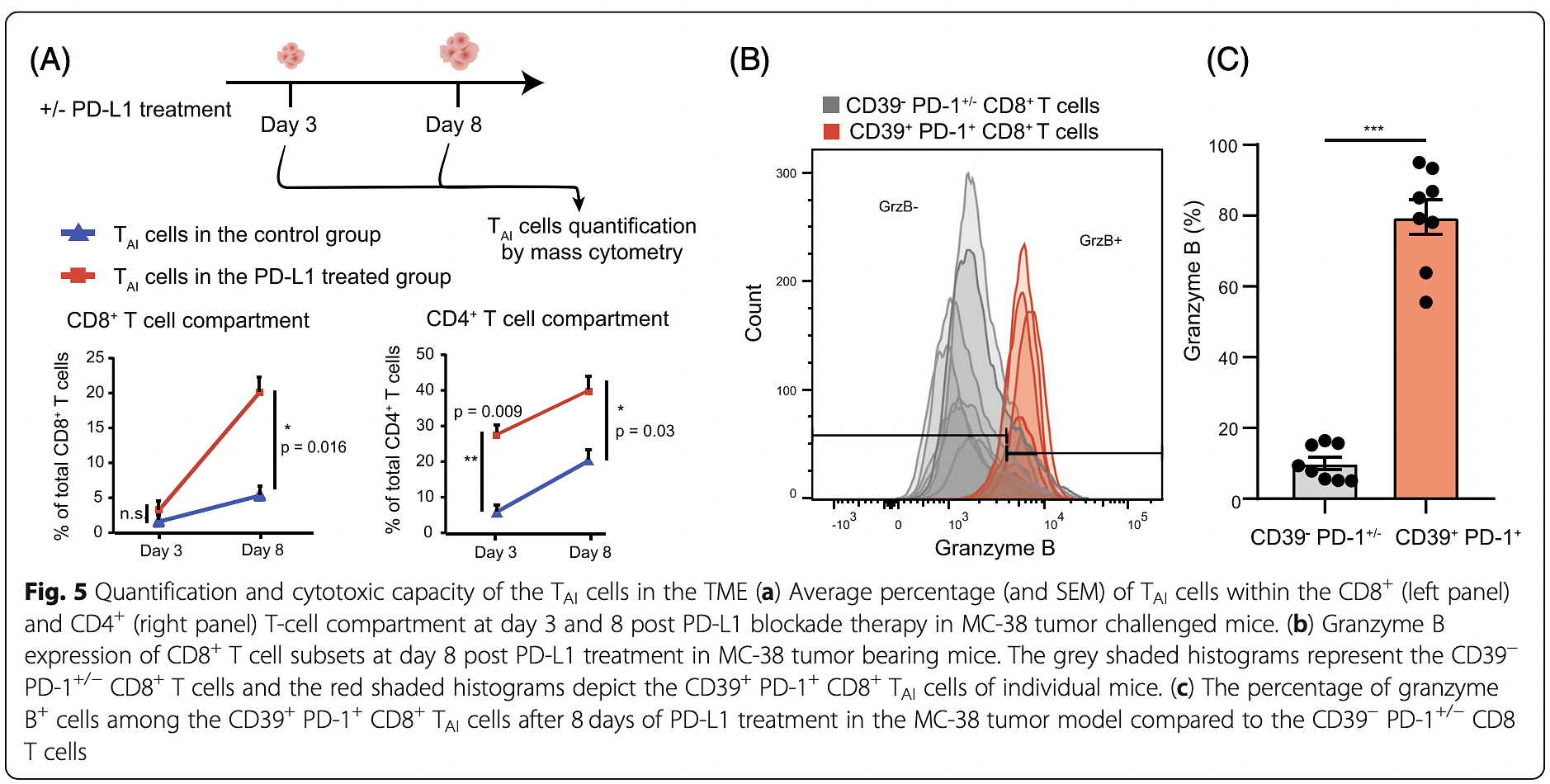J Immunother Cancer
PD-L1 blockade engages tumor-infiltrating lymphocytes to co-express targetable activating and inhibitory receptors

Background The clinical benefit of immunotherapeutic approaches against cancer has been well established although complete responses are only observed in a minority of patients. Combination immunotherapy offers an attractive avenue to develop more effective cancer therapies by improving the efficacy and duration of the tumor-specific T-cell response. Here, we aimed at deciphering the mechanisms governing the response to PD-1/PD-L1 checkpoint blockade to support the rational design of combination immunotherapy. Methods Mice bearing subcutaneous MC-38 tumors were treated with blocking PD-L1 antibodies. To establish high-dimensional immune signatures of immunotherapy-specific responses, the tumor microenvironment was analyzed by CyTOF mass cytometry using 38 cellular markers. Findings were further examined and validated by flow cytometry and by functional in vivo experiments. Immune profiling was extended to the tumor microenvironment of colorectal cancer patients. Results PD-L1 blockade induced selectively the expansion of tumor-infiltrating CD4+ and CD8+ T-cell subsets, co-expressing both activating (ICOS) and inhibitory (LAG-3, PD-1) molecules. By therapeutically co-targeting these molecules on the TAI cell subsets in vivo by agonistic and antagonist antibodies, we were able to enhance PD-L1 blockade therapy as evidenced by an increased number of TAI cells within the tumor micro-environment and improved tumor protection. Moreover, TAI cells were also found in the tumor-microenvironment of colorectal cancer patients. Conclusions This study shows the presence of T cell subsets in the tumor micro-environment expressing both activating and inhibitory receptors. These TAI cells can be targeted by combined immunotherapy leading to improved survival.
More Information
Citation
BibTex
@article{bib:beyrend:2019,
author = { Beyrend, Guillaume and van der Gracht , Esmé T.I. and Yilmaz, Ayse and van Duikeren, Suzanne and Camps, Marcel and Höllt, Thomas and Vilanova, Anna and van Unen, Vincent and Koning, Frits and de Miranda, Noel and Arens, Ramon and Ossendorp, Ferry },
title = { PD-L1 blockade engages tumor-infiltrating lymphocytes to co-express targetable activating and inhibitory receptors },
journal = { J Immunother Cancer },
volume = { 7 },
year = { 2019 },
pages = { 217 },
doi = { 10.1186/s40425-019-0700-3 },
pubmedid = { 31412943 },
url = { https://publications.graphics.tudelft.nl/papers/132 },
}